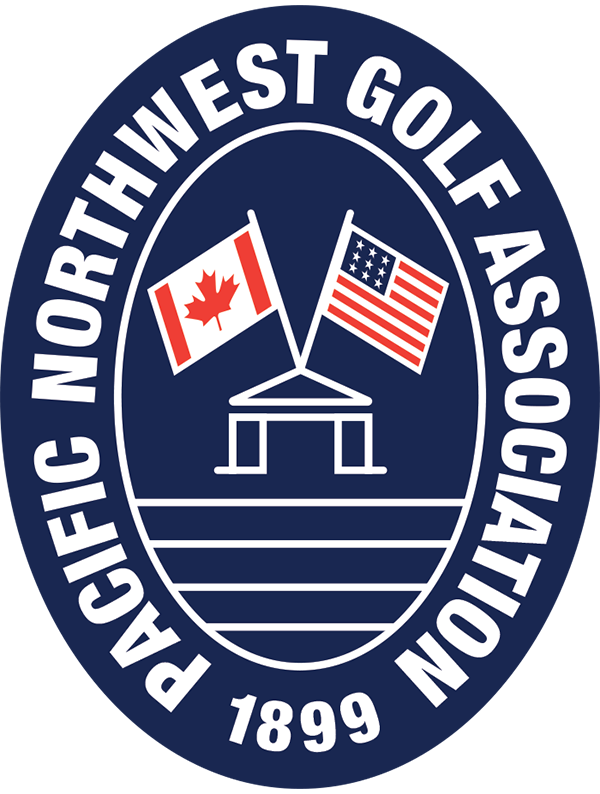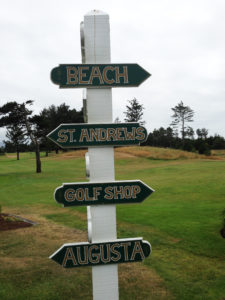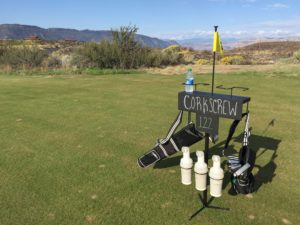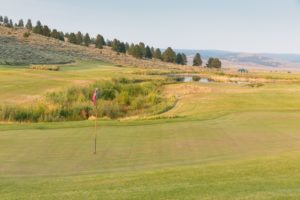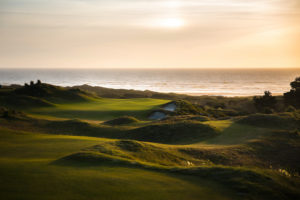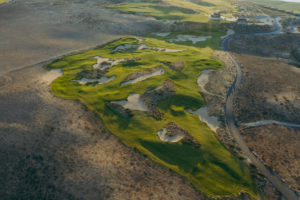Don’t Sell Them Short
by Crai S. Bower
Once considered an afterthought, short courses – par-3 layouts – are filling a growing need in the game, and attracting some big names to design them.
A father and son travel to Bandon Dunes twice a year. The president of a Bellevue, Wash. country club and his college golfer son take their games seriously, averaging well over 120 rounds a year. They love selecting what three courses from the famous Bandon rotation they will choose, but they always play The Preserve, the resort’s 13-hole short course.
“When we were driving back last time my son couldn’t stop talking about it,” the father recalls. “It’s just the perfect combination of challenge, setting, and fun – so much fun.”
The father-son duo is not alone. Across America, the short course is having a moment.
Just ask David McLay Kidd, the Bandon Dunes architect who also designed Gamble Sands in north-central Washington. In May, Kidd unwrapped QuickSands, Gamble Sands’ new 14-hole short course.
“Short courses were once afterthoughts, just pitch-and-putts in a spare corner, but they’ve become something all their own,” says Kidd. “Golf magazines are about to start ranking them nationally.”
Kidd says the freedom a short course affords designers is shared by the players. Both Gamble and Bandon allow for groups of eight to play together as long as they book back-to-back tee times. Players routinely trade different clubs with each other, hooting and hollering over close shots with a hole-by-hole excitement.
The perpetual buzz is quite intentional – at QuickSands, speakers blasting classic rock are sprinkled throughout the holes, an acoustic accoutrement Kidd first saw, and heard, at The Cradle, the Gil Hanse-designed 9-hole short course at Pinehurst.
The effect works. How could we not have a good time when Neil Young is serenading us about “barkers and colored balloons” on “Sugar Mountain?”
I spent a few hours on (in?) QuickSands on Opening Day, May 1st, and saw not one iota of the frustration that inevitably creeps up like a false front on most of us when playing 18. It’s all part of Kidd’s plan, a golfing experience where there are neither bad shots nor frowns.
“We built a 25-acre playground,” he says of QuickSands. “You can’t lose a ball, so there’s no excuse not to try anything. I find it’s the most fun when the golf shot becomes a story, something more than just hitting land and stopping. Here, you want to hit land and roll, and that’s where the narrative begins, watching your ball roll for 20-30 seconds while the entire group oohs and ahhs, laughs and cries, while thinking about the story’s next chapter, their shot!
“We have a rule here and in Bandon, you can’t complain about your shot until it stops rolling. Remember, Tiger intentionally never hit a green when he first won The Open at St. Andrews in 2000.”
This raises another key point about the rising popularity of short courses. Far from just a romp through 1970s hair bands with your preferred octet, playing the new era short course also improves your game. The 13th at QuickSands is best played with a putter off the tee. The idea was so enticing to Kidd that he extended the course from 13 to 14 holes.
His favorite hole, however, is No. 3, the “Crater.” The convention, he says, would have been to construct a plateau-shaped green, a generous landing area, given the blind tee shot. The designer instead created a punch bowl, allowing for the kind of hole locations that will runneth over with potential aces.
“Where else can you play 13 holes and have a chance at a legitimate hole-in-one on every single tee shot?” asks Scott Millhouser, head PGA professional for Bandon Trails and Bandon Preserve (yes, Bandon Preserve has a head professional). “And on number 13 you can putt the ball 110 yards for an ace, which a number of guests have made.”
And there’s nothing illegitimate about it either. There are several holes on the full courses that require the same distance and creativity. In fact, Millhouser recommends Bandon novices first play The Preserve to gain a sense of the winds off the Pacific and, especially, the green structures.
“It can definitely improve your game because you’re working with your scoring clubs, mid to short irons, figuring out how to get up and down,” says Millhouser, who had never played links golf before working at Bandon. “The greens are so interesting and challenging because there are side banks, backboards, places to land it short. You don’t have to hit a number all the time; it really gets your creative juices going. My own iron play and putting has improved playing here.”
Millhouser’s respect is hardly unique. Kidd calls the Coore and Crenshaw-designed Preserve the “Elvis” of the growing genre, the short course by which all others are measured.
“If QuickSands is even considered in the shadow of The Preserve then I have done my job,” he says. “Personally, I consider it a must-play every time I’m in Bandon.”
Playable in under two hours, Bandon visitors often save The Preserve for their getaway day, but it’s also a perfect finish on those days when walking another full 18 proves too formidable.
If there’s any question that short courses are here to stay, consider The Hay, the fabled short course at Pebble Beach. To keep pace with more creative pacing, The Hay just received a full redesign. They hired an architect who they hoped would honor the 54-year history while infusing the more traditional par-3 layout with some creative twists and turns. The designer’s name is Tiger Woods.
Yes, even big names are getting into the short game.
Ask any golfer where they first struck a golf ball on a real course, and a majority of them will tell you it was on a short par-3 course. The importance and value of the short course cannot be overstated – these courses are less intimidating, more casual, not to be taken too seriously, and, most importantly, do not set the beginner up to fail.
They also take less time to play, are generally less expensive to play, and offer a full golf experience. They are the gateway into a lifelong game.
Here are just a few of the region’s many short courses.
Chief Egan and McVeigh’s Gauntlet
Both designed by Portland-native Dan Hixson, these two short layouts are part of the Silvies Valley Ranch complex in Seneca, Ore. Silvies.us.
The Robin Hood Course
The owners of Falcon Crest Golf Club in Kuna, Idaho see where the game is going, and are in the process of completely redesigning their existing short course. It will reopen next spring, and will complement their two full-size courses. FalconCrestGolf.com.
The Children’s Course
Home to several junior golf programs, including The First Tee of Greater Portland, this short course is ideal for players of all abilities. ChildrensCourse.org.
Highlands Golf Course
This 9-hole short course in Tacoma has become a local institution. HighlandsGolf.net.
Highlands Golf Club
On the Oregon Coast in Gearhart, this executive 9-holer provides an informal vacation round. HighlandsGolfGearhart.com.
Mason Par-3 Course
Co-designed by Bunny Mason and Dan Hixson, this short course at Columbia Edgewater Country Club in Portland was built on extra land at the facility and became a blueprint for what parkland-style short courses can be. CECC.com.
Jefferson Park and Jackson Park
These municipal courses in Seattle both have a par-3 course alongside their full courses. PremierGC.com.
(This article previously appeared in the June 2021 issue of Pacific Northwest Golfer)
Crai Bower writes scores of adventure travel articles a year for over 25 publications, including golf stories for American Way, Hearst Media and Journey magazine. He appears regularly on the American Forces Network as a travel commentator. Visit his site at FlowingStreamMedia.net.
